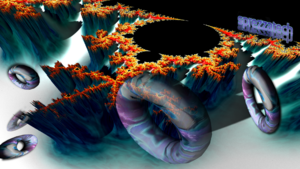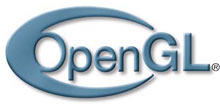Graphics: Difference between revisions
No edit summary |
No edit summary |
||
| Line 1: | Line 1: | ||
[[File:Tubefire.png|right|thumb|SprezzOS contains powerful graphics support.]] | [[File:Tubefire.png|right|thumb|SprezzOS contains powerful graphics support.]] | ||
''To explain: Gallum, DRM, DRI, KMS, OpenGLES, OpenVG, X, Wayland, widgetsets'' | |||
==VGA mode== | ==VGA mode== | ||
Revision as of 04:10, 11 November 2012

To explain: Gallum, DRM, DRI, KMS, OpenGLES, OpenVG, X, Wayland, widgetsets
VGA mode
Framebuffer

An abstraction of hardware, mapping memory to displayed pixels. If a framebuffer driver is active, /dev/fbX devices will exist, and the fbset tool can be used to display their statuses. It is generally not advised to use a framebuffer driver at the same time as X-based hardware control, though this sometimes works in practice.
OpenGL

OpenGL (the Open Graphics Library) is an API specification. On desktop Linux, there are three major implementations of OpenGL:
- NVIDIA's proprietary implementation, which supports most NVIDIA cards
- AMD's proprietary implementation, which supports most AMD cards
- Mesa, an open implementation mixing hardware acceleration with software fallback. It includes:
- Nouveau, an open implementation for NVIDIA cards
- Radeon, an open implementation for AMD cards
- An open implementation for Intel cards
- Implementations for embedded devices
- OMAP (Texas Instruments)
- SGX (PowerVR)
Generally, the proprietary drivers tend to support newer OpenGL features and provide better performance, while the Mesa drivers are more smoothly integrated with the rest of the graphics stack (Kernel Mode Switching, Direct Rendering Infrastructure, XRandr, etc). Standard Linux tools might fail to work with the proprietary drivers, forcing use of proprietary tools to control the device.
See Also
- VGA compatible text mode on Wikipedia